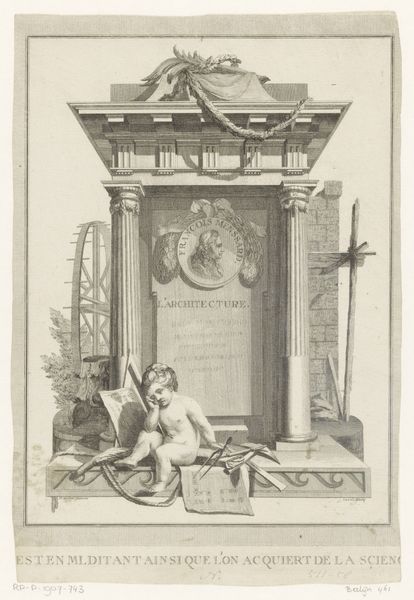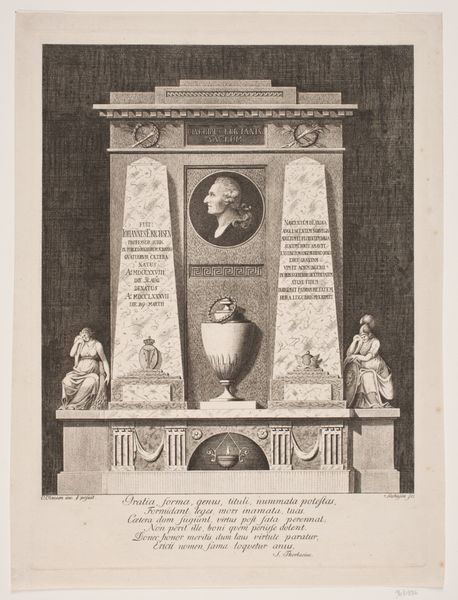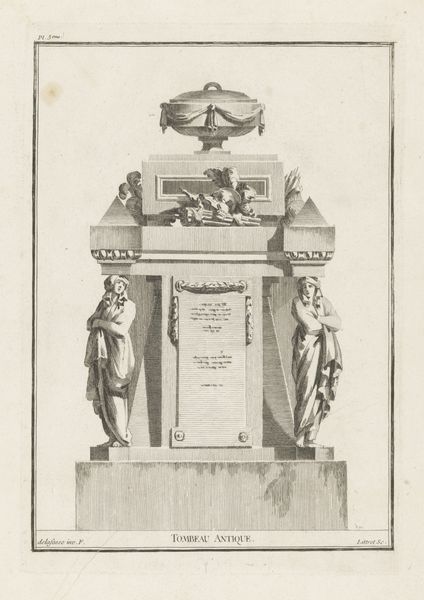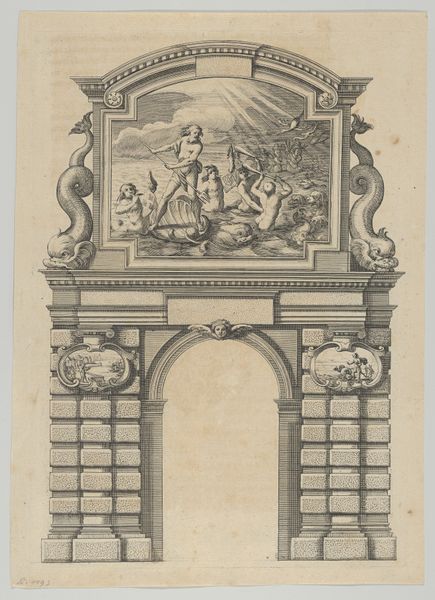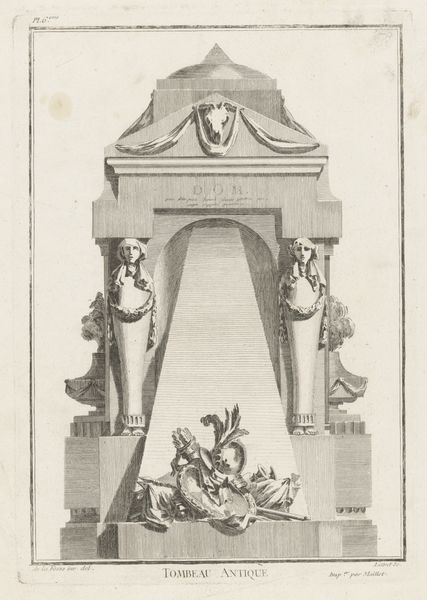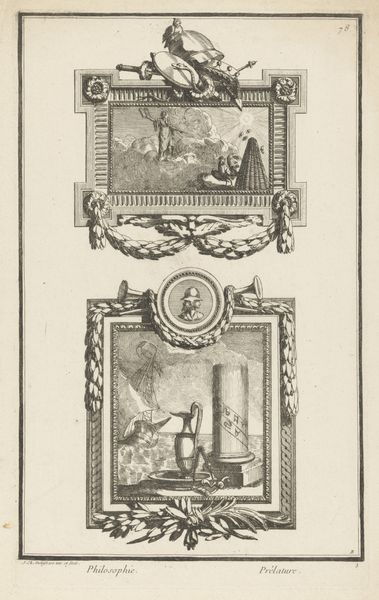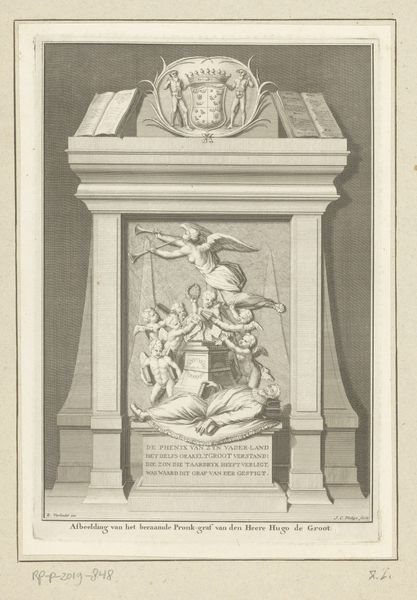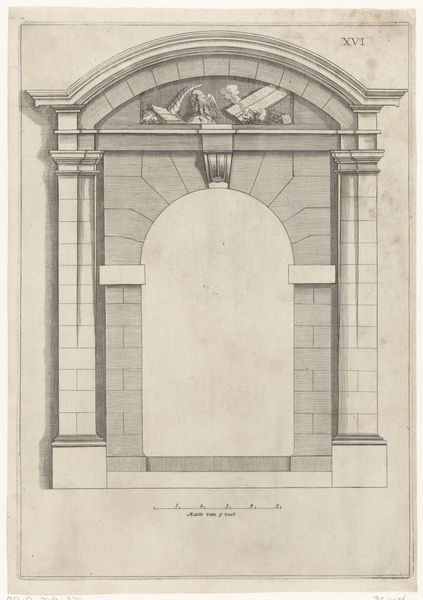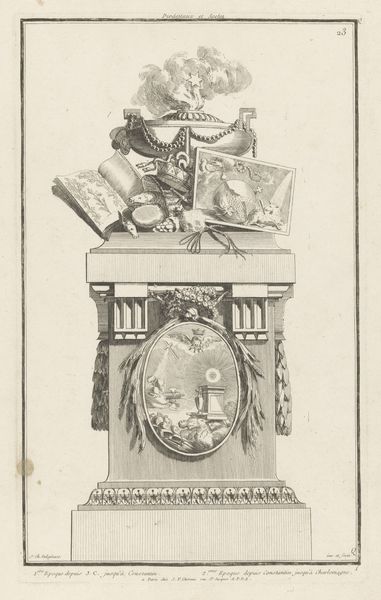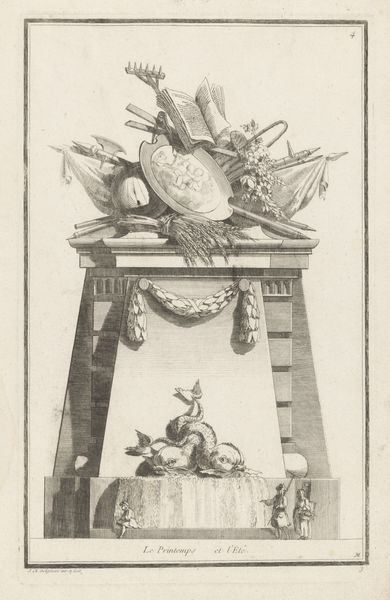
engraving, architecture
#
baroque
#
old engraving style
#
traditional media
#
landscape
#
history-painting
#
engraving
#
architecture
Dimensions: height 179 mm, width 132 mm
Copyright: Rijks Museum: Open Domain
Curator: The sharp lines in this old engraving style pull my focus. What is it we are looking at here? Editor: This engraving, likely made between 1714 and 1756, presents the base of an obelisk featuring a portrait of Domenico Fontana. Note how the lions flank an upper emblem, adding an interesting horizontal element to the vertical thrust of the obelisk. Curator: Obelisks served a vital function, embodying political and religious power. They were erected using immense coordinated effort, drawing from vast pools of laborers and resources to move these monolithic structures. The very act of its construction speaks volumes. Editor: I am more interested in how the monument is represented. The composition seems designed to impress, creating visual interest through juxtaposed elements. Curator: What truly captivates me is how architecture becomes a tool, both functionally and symbolically. In this case it represents papal authority—note the inscription. Editor: Functionally, this piece also acts as a visual document commemorating Domenico Fontana's contributions to Roman architecture and engineering. Engravings such as this circulated knowledge during the period, documenting achievements in art, architecture, and science. Curator: So this detailed print allowed people outside of Rome to envision the real scale and impressiveness of the Piazza. The artist mediated power and influence by immortalizing architectural feats. Editor: Exactly. But it also reduces something grand and physical into a neat little thing, playing on a visual game with dimension and perception that invites inquiry into its form and content. Curator: Examining the base reminds us that this wasn’t just about the soaring monument. It also needed the bedrock—the skilled hands that made these ambitions a material reality. I would want to explore in depth the history and context surrounding the making and reception of this piece, in the hopes of fully unraveling its meaning. Editor: Fair point. While I was immediately drawn to its pictorial nature, I realize this isn't merely a visual representation of form. Considering your observations has greatly altered my interpretation, and my appreciation has grown.
Comments
No comments
Be the first to comment and join the conversation on the ultimate creative platform.
